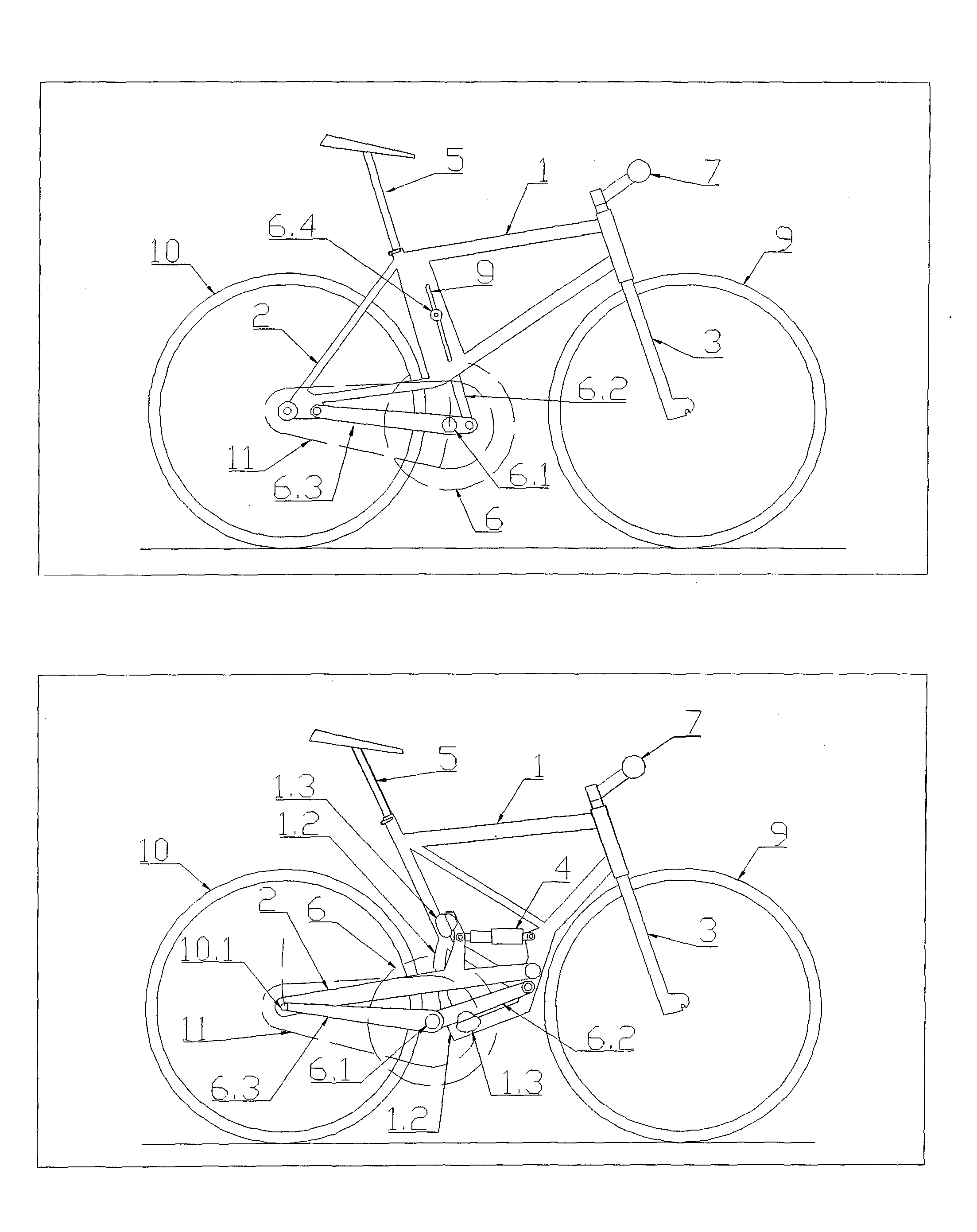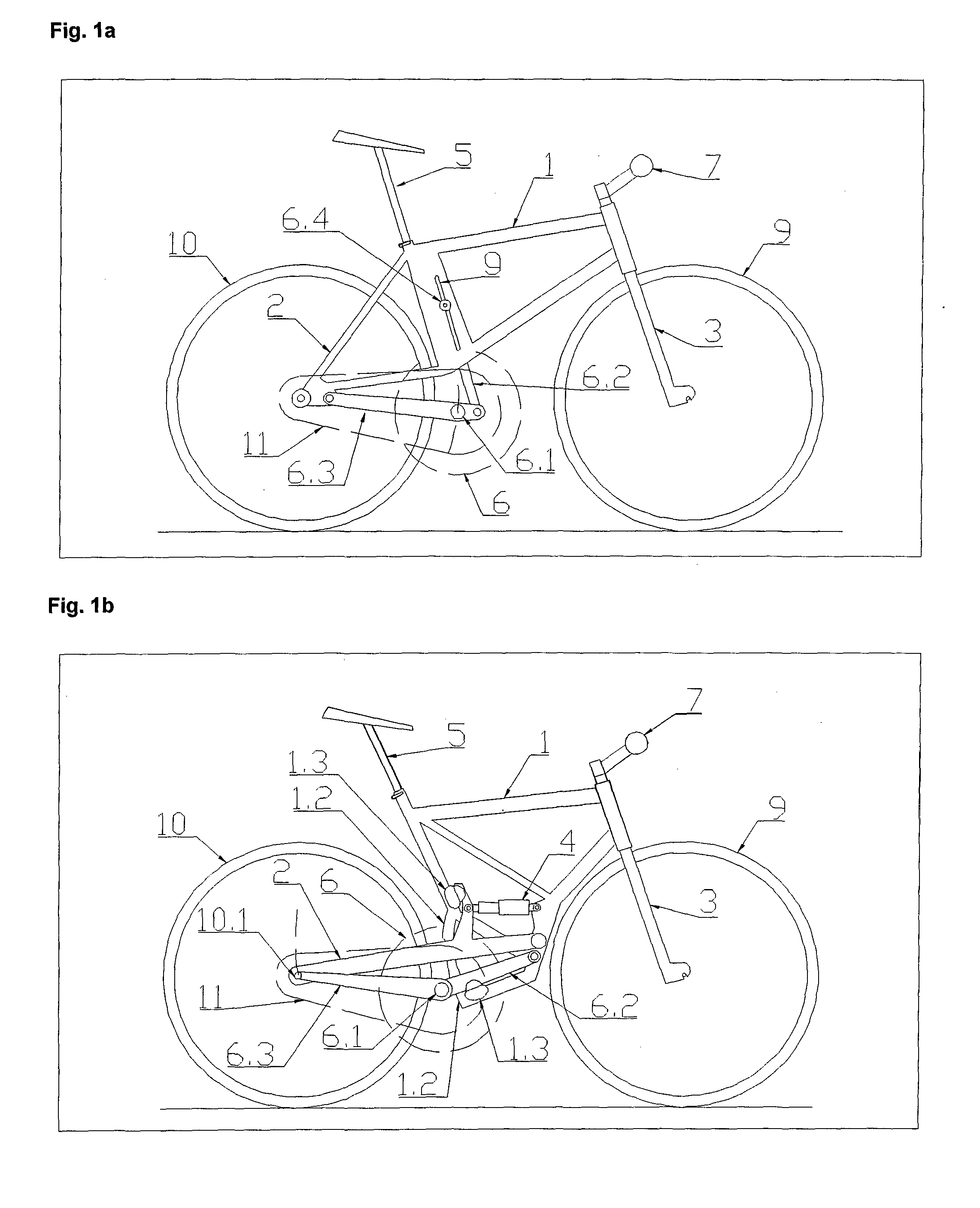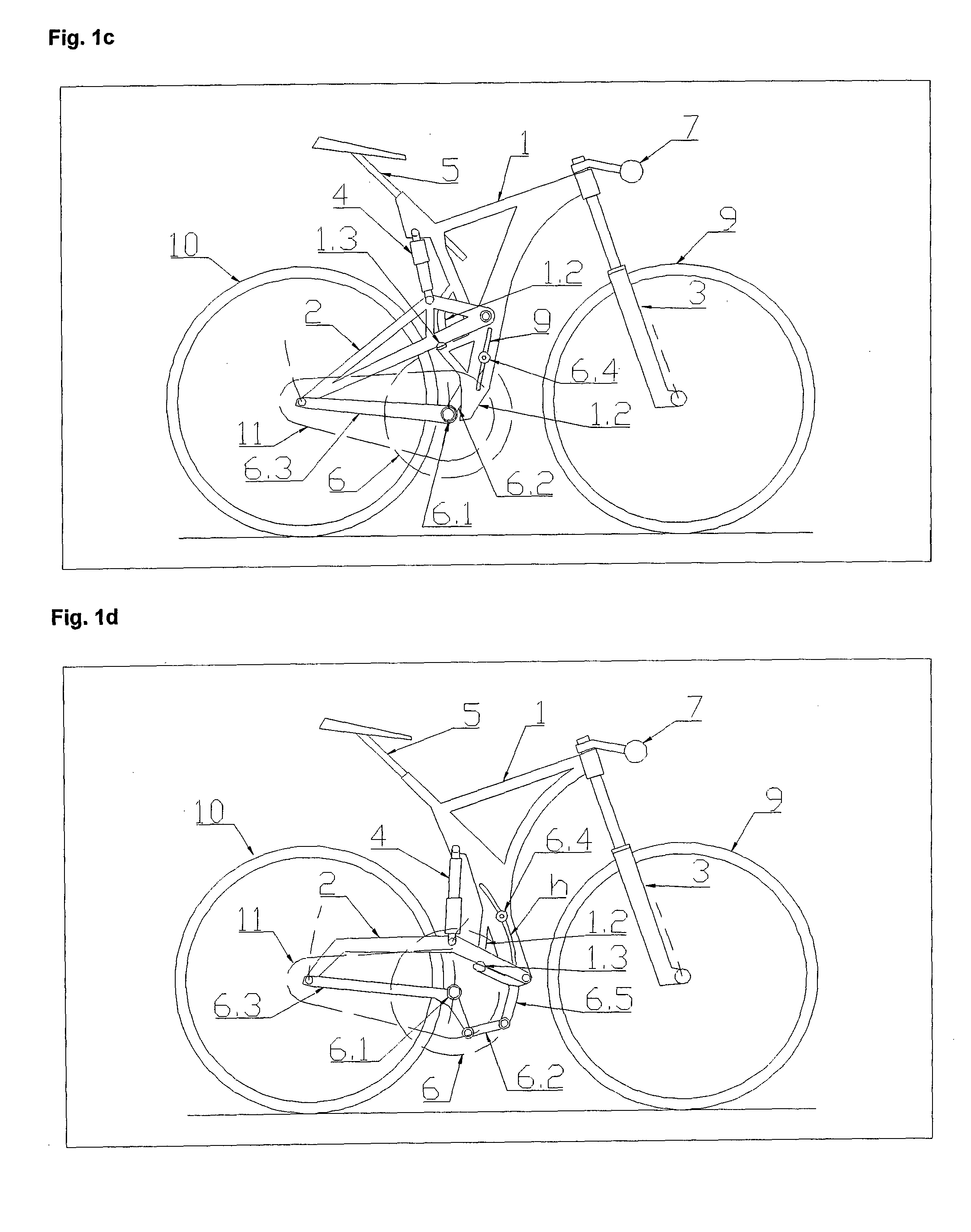Bicycle, Modifiable for Uphill, Downhill and/or Trail Conditions
a technology of bicycles and bikes, applied in the field of bicycles, can solve the problems of low rigidity of sprung frames, inability to provide potentially useful features in current regulating systems, and inability to optimize bicycle geometry. , to achieve the effect of maximizing bicycle geometry, minimizing the range of modifiability, and ensuring the stability
- Summary
- Abstract
- Description
- Claims
- Application Information
AI Technical Summary
Benefits of technology
Problems solved by technology
Method used
Image
Examples
example 1
[0036]The bicycle shown on FIG. 1a to 1f comprises assemblies that co-create a Frame System, Motion System, Rider-Positioning System and in some cases also a sprung Suspension System. Said Frame System has a Frame 1, Tail 2 and Fork 3. The Fork 3 is rotatable and mounted on the front end of a Frame 1. A Tail 2 is attached to the rear end of a Frame 1. Said sprung Suspension System has one or more Suspension Assemblies 4. The rear Suspension Assembly 4 interconnects a movable Tail 2 with a Frame 1. The front Suspension Assembly 4 interconnects the mutually sliding parts of a Fork 3. Said Motion System has a Front Wheel 9, Rear Wheel 10 and Drivetrain Assembly 11 which are connected to Frame System assemblies. A Rear Wheel 10 is rotatably attached to a Tail 2. A Drivetrain Assembly 11 connects the Rear Wheel 10 with a Pedal Assembly 6. The Pedal Assembly 6 together with a Seat Assembly 5 and a Handlebar Assembly 7 co-creates the said Rider-Positioning System and are attached to Frame ...
example 2
[0046]The bicycle shown on FIGS. 2a to 2c comprises Frame System assemblies (Frame 1, Tail 2, Fork 3), a Motion System assemblies (Front Wheel 9, Rear Wheel 10, Drivetrain Assembly 11) and in some cases a Suspension System assemblies (Suspension Assemblies 4), which are alike as those in the Example 1. A Rider-Positioning System has a Handlebar Assembly 7 alike as that in the Example 1 and a Pedal Assembly 6 either the same as in the Example 1 or with a Bottom Bracket 6.1 commonly connected to a Frame 1. The bicycle is featured with a movable (with respect to the Frame 1) connection of a Seat Assembly 5 which is lockable by at least one Seat Lock 5.6.
[0047]FIG. 2a presents an embodiment of a Seat Assembly 5, connected to a Frame 1 by Clamp Holders 5.4 and 5.5, which are slidable along the paths a and b. The depicted bicycle has a Seat 5.1 connected by a telescopic Seat Post 5.2 to a Seat Carrier 5.3, which is slidably connected to a Frame 1 and lockable by a Seat Lock 5.6 (designed ...
example 3
[0051]The bicycle depicted on FIGS. 3a to 3d comprises Frame System assemblies (Frame 1, Tail 2, Fork 3), Motion System assemblies (Front Wheel 9, Rear Wheel 10, Drivetrain Assembly 11) and in some cases has a Suspension System (Suspension Assemblies 4), which are alike as those in the Example 1. A Rider-Positioning System has a Seat Assembly 5 and a Pedal Assembly 6 alike as those in the Example 1 or 2. The bicycle is featured with a Handlebar 7.1 connection which is movable with respect to the Fork 3 and lockable by at least one Handlebar Lock 7.3. Another possible feature is multiple connection of Handlebar Assembly 7 to a Fork 3, below and above a Head Tube 1.1.
[0052]FIGS. 3a and 3b present the embodiment of a Handlebar Assembly 7, with a Handlebar 7.1 connected slidably (and in some cases also freely to rotation) along the path c on a Carrier 7.2. The embodiment of a bicycle depicted in FIG. 3a has an unslidable Seat Assembly 5 and a Pedal Assembly 6. Therefore, the shape of a ...
PUM
 Login to View More
Login to View More Abstract
Description
Claims
Application Information
 Login to View More
Login to View More - R&D
- Intellectual Property
- Life Sciences
- Materials
- Tech Scout
- Unparalleled Data Quality
- Higher Quality Content
- 60% Fewer Hallucinations
Browse by: Latest US Patents, China's latest patents, Technical Efficacy Thesaurus, Application Domain, Technology Topic, Popular Technical Reports.
© 2025 PatSnap. All rights reserved.Legal|Privacy policy|Modern Slavery Act Transparency Statement|Sitemap|About US| Contact US: help@patsnap.com



